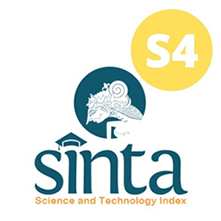Development of Cardiac Monitor Through Carotid Pulse, Phonocardiography and Electrocardiography
Abstract
Heart disease is a very dangerous disease. Even today in Indonesia the disease ranks first as a cause of death. The purpose of this study is to design ECG, PCG, and Carotid Pulse on a computer with Delphi programming. The contribution of this research is that the carotid signal can be displayed on a personal computer monitor so that it can be viewed simultaneously with ECG and PCG signals. In order to intercept the carotid signal on the carotid artery on the surface of the neck, a piezoelectric sensor is used. In this study, the recording of the Carotid Pulse signal was carried out in the left upper neck area of the carotid artery with the help of a piezoelectric sensor. The primary circuit of the cardiac monitor consists of the non inverting amplifier, low pass filter 100hz, high pass filter 0,1 hz, summing amplifier and arduino microcontroller. Carotid Pulse Showed that the correlation between the pattern of the dicrotic notch (the D wave) in the carotid pulse and second heart sound (S2) was occurred simultaneously or just before the D wave pulse from carotid pulse for each respondent. The results of data collection from 10 respondents, were measured from the correlation between the Dicrotic Notch (pattern D) on the carotid pulse and S2 on the phonocardiograph occurred just before the Dicrotic Notch from carotid pulse. From the correlation measurement data obtained an average of 10 respondents, the interval between S2 and Dicrotic Notch was ±0.063 s.

This work is licensed under a Creative Commons Attribution-ShareAlike 4.0 International License.
Authors who publish with this journal agree to the following terms:
- Authors retain copyright and grant the journal right of first publication with the work simultaneously licensed under a Creative Commons Attribution License that allows others to share the work with an acknowledgement of the work's authorship and initial publication in this journal.
- Authors are able to enter into separate, additional contractual arrangements for the non-exclusive distribution of the journal's published version of the work (e.g., post it to an institutional repository or publish it in a book), with an acknowledgement of its initial publication in this journal.
- Authors are permitted and encouraged to post their work online (e.g., in institutional repositories or on their website) prior to and during the submission process, as it can lead to productive exchanges, as well as earlier and greater citation of published work (See The Effect of Open Access).











